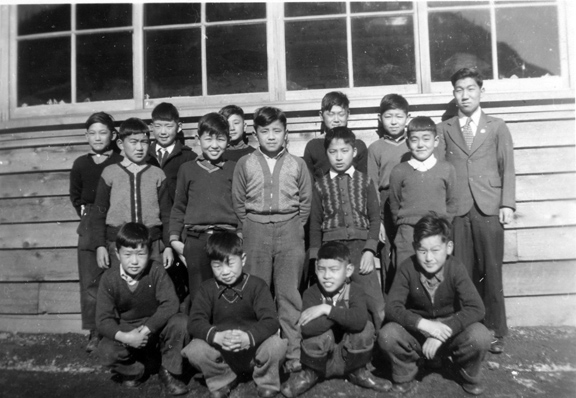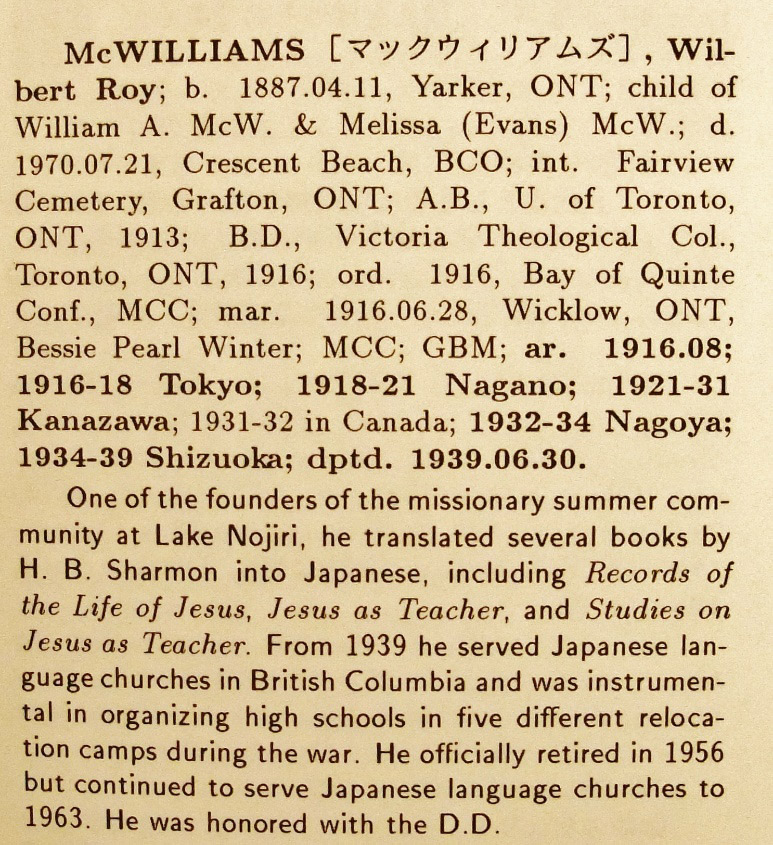Tashme Voices
Since coming to Tashme, the feeling of bitterness and hurt, that I first felt, has gradually grown dim, and I hope by now completely erased. Being able to walk about without the diffident fear of someone looking at me with disdain, “Another dirty Jap,” has helped. Perhaps it is cowardly to be glad to flee from distrust, but I must admit that in a certain way, there is a sense of freedom even in this confined mountain hermitage, which is ours. Letters to and from our white friends, the people who love and trust us, no matter how dark a cloud hangs over us, has been a source of strength, and perhaps the greatest aid of all is the friendless and great kindness of the Church leaders, with whom we come in daily contact. This knowing the good, and only the good, has enabled me to regain the state of true poise, that was lost in the whirlpool of injustice which followed the wake of war. It is with a sense of victory that I am able, not, to read with interest, but in a detached way, the pros and cons on the question of the Japanese-Canadians. For I have come to know, no matter how prejudiced the views of some may be, there will always be the good and the kind to counteract them. – Mary Oki
Although there were three religious denominations in Tashme – Buddhist, United Church and Anglican Church – the main religious distinction was not denominational but rather Buddhist and Christian. The majority of residents were Buddhists. The Japanese nationals were Buddhists. Among the Japanese born in Canada, many were members of the United or the Anglican Church.
Missionaries of the United Church were teachers in the high school, while missionaries of the Anglican Church taught kindergarten.
The three denominations shared space in the camp:
Buddhist Sunday schools and church services were conducted in the community hall in D building.
• The United Church Sunday school also used the D building. The classroom partitions were removed for Sunday schools and church services.
• United Church services were conducted in the school extension in A building. The classroom partitions were removed for the church services.
• Anglican Church Sunday school and church services were held in the kindergarten.
The Buddhist Sunday school and church services were conducted in Japanese, while the Christian Sunday schools were conducted in English. The Christian churches held a morning service in Japanese for older people and an evening service in English for the young people.
The Buddhist, United and Anglican churches sponsored youth groups. By organizing and leading recreational and social activities among the youth, these organizations were an influential part of the social fabric in Tashme.
The church missionaries had a very significant influence on the youth. Not only were they teachers in the high school, they also developed a close social relationship with many of their students. They went out of their way to help their students learn and broaden their knowledge, in music and the arts, for example. A music appreciation program, held on Saturdays, exposed the students to the classics and well as the popular music of the day. The missionary teachers and their students often spent time together hiking and having picnics. Many students remained in contact with their missionary teachers for decades after the internment.
TASHME TIMES – TASHME BC
The Tashme Buddhist Church and Sunday School has .been progressing satisfactorily since its organization, last October under the direction of Rev. Tatibana. Regular Sunday services are held by Rev. Tatibana at 2 o'clock at the Buddhist Temple. The Sunday School has an enrollment of some 150 pupils taught by young Nisei girls including the Misses Nakamoto, Tanaka, Yamanaka. Masato, Nakamoto, Takahashi, Nakamura, Kohara and Taguchi.
from New Canadian 1943-02-06
In Tashme, Sunday morning service in Japanese and Sunday evening service in English were held in the United Church. The Minister, Rev. Wilbert Roy McWilliams, lived in Vancouver and came to Tashme every weekend. Miss Bailey worked for the church as well. In March 1943, 230 children attended Sunday School. This meant that over one quarter of all children attended, although only about a quarter of the population belonged to the United Church. Both the Anglican and the United Church organized summer camps for boys and girls. (Missionary Monthly, Oct 1947, p 438).
from Japanese Canadian Education During the WWII Internment, Wakako Ishikawa, Master’s Thesis, Dept of Curriculum, Teaching and Learning, University of Toronto, 2003
Reverend Wilbert Roy McWilliams
Victoria College University of Toronto YMCA Executive 1915-16. Wilbert Roy McWilliams shown in right front row.
Regarded as one of the most respected persons by the Japanese in Tashme, Rev. McWilliams was very influential in advocating for the Japanese. He was instrumental in the formation of the high school in Tashme and in recruiting its non Japanese teachers, many of whom were missionaries.
During the very trying times following the government mandate that all Japanese decide whether to move east or return to Japan, many Tashme residents sought his advice. He is noted for his stance, not popular with the authorities, that all Japanese delay making a decision.



